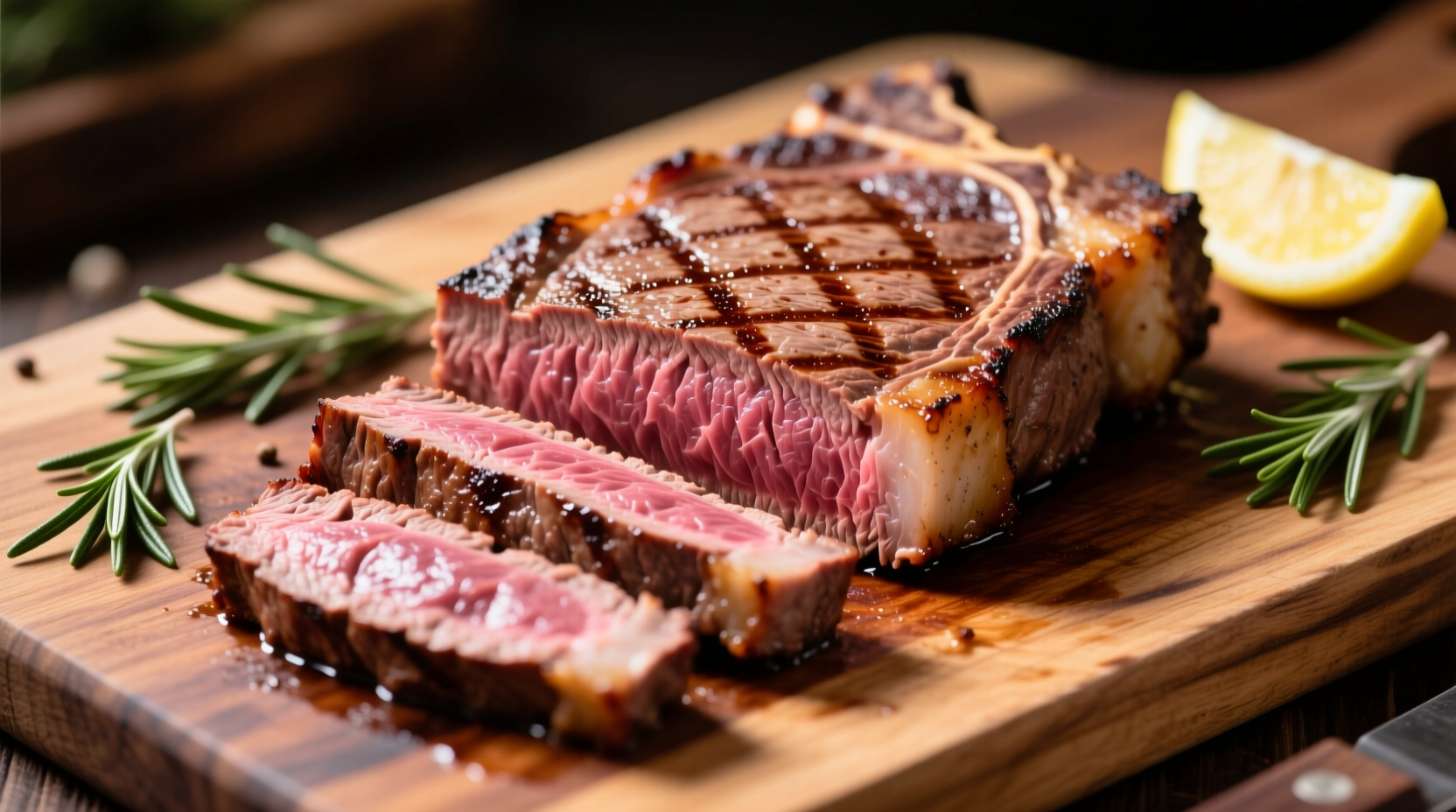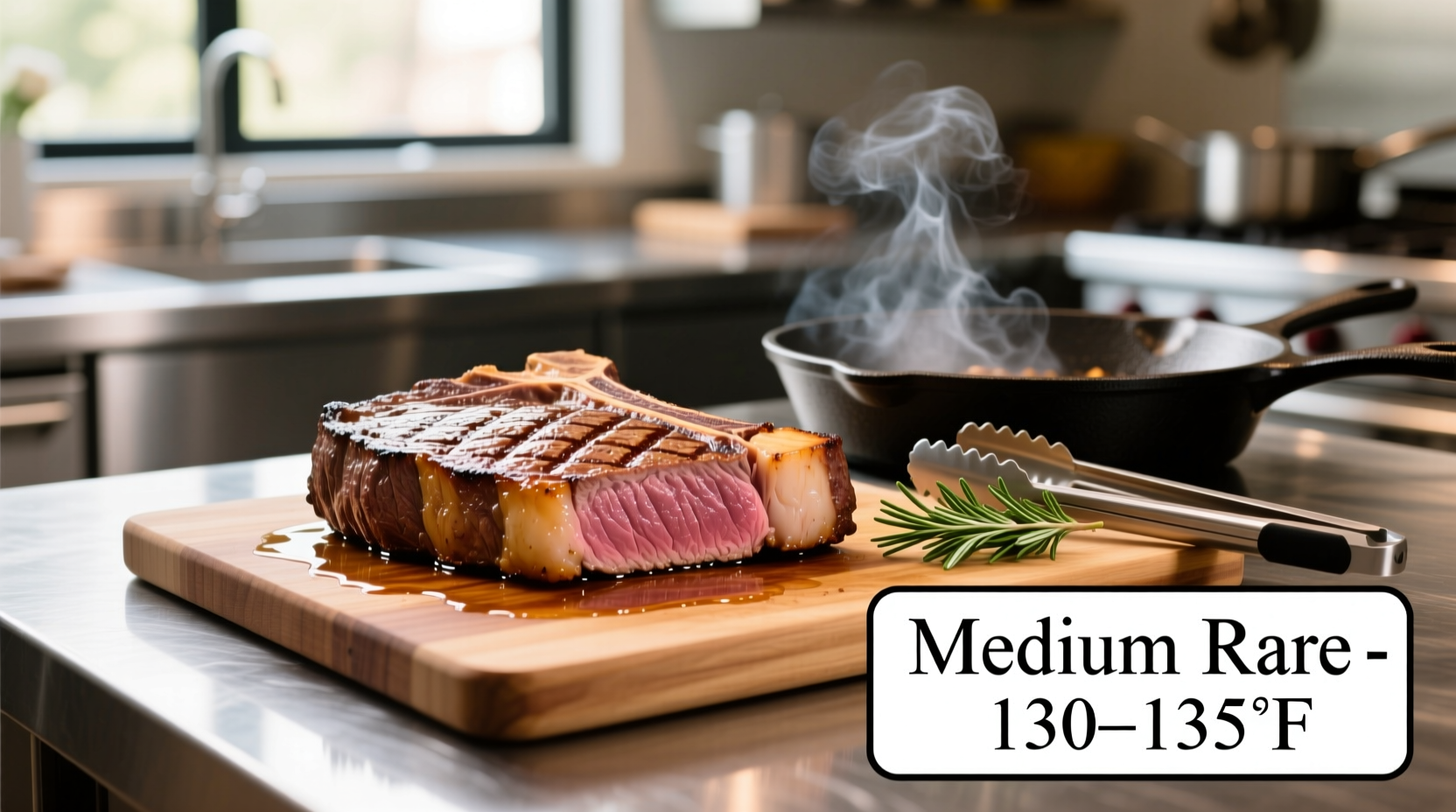Mastering the perfect medium steak transforms an ordinary dinner into a restaurant-quality experience. Whether you're cooking a ribeye, sirloin, or filet mignon, understanding the precise timing, temperature control, and resting process makes all the difference between a dry disappointment and a succulent masterpiece.
What Exactly Is Medium Steak Doneness?
Medium steak isn't just about timing—it's about precise internal temperature. At medium doneness, your steak should register between 135-140°F (57-60°C) when measured with an instant-read thermometer. This temperature range creates a warm pink center with just a hint of red, surrounded by a nicely browned exterior. The texture should feel slightly firm but still yield to gentle pressure, with juices that run pink rather than red.
| Doneness Level | Internal Temperature | Visual Characteristics |
|---|---|---|
| Medium Rare | 130-135°F (54-57°C) | Bright red center, cool red juice |
| Medium | 135-140°F (57-60°C) | Warm pink center, pink juice |
| Medium Well | 145-150°F (63-66°C) | Small pink center, clear juice |
This temperature data aligns with recommendations from the USDA Food Safety and Inspection Service, which emphasizes that proper internal temperatures ensure both safety and optimal texture for different doneness preferences.
Essential Preparation Steps for Perfect Results
Before you even heat your pan, proper preparation sets the stage for steak perfection:
- Bring steak to room temperature: Remove from refrigerator 30-60 minutes before cooking. Cold meat cooks unevenly.
- Dry the surface thoroughly: Pat steak completely dry with paper towels—this creates the perfect sear.
- Season generously: Use coarse salt and freshly ground black pepper at minimum. For best results, salt at least 40 minutes before cooking.
- Preheat your cooking surface: Whether pan or grill, it must be properly hot before the steak touches it.

Step-by-Step Cooking Methods
Pan-Searing Method (Best for Home Kitchens)
This reliable technique works with any heavy-bottomed skillet:
- Heat 1-2 tablespoons of high-smoke point oil (avocado or canola) in a cast iron or stainless steel skillet over medium-high heat until shimmering.
- Place steak in pan and press gently for full contact. Sear undisturbed for 3-4 minutes until a deep brown crust forms.
- Flip steak and cook for another 3-4 minutes for 1-1.5 inch thick cuts.
- For thicker steaks, tilt pan and add 2 tablespoons butter, 2 crushed garlic cloves, and fresh herbs. Tilt pan and spoon melted butter over steak continuously for 1-2 minutes.
- Check temperature—remove steak when thermometer reads 125-130°F (52-54°C) as carryover cooking will raise it to medium.
Grill Method (For Outdoor Cooking)
Grilling adds delicious smoky notes while achieving perfect medium doneness:
- Preheat grill to high (450-500°F/230-260°C) with two-zone cooking setup.
- Place steak directly over high heat and sear for 3-4 minutes per side.
- Move steak to cooler side of grill, cover, and continue cooking until reaching 125-130°F (52-54°C).
- Rotate steak 90 degrees halfway through searing for attractive crosshatch marks.
| Steak Thickness | Pan Searing Time | Grill Time | Target Temp Before Resting |
|---|---|---|---|
| 1 inch (2.5 cm) | 3-4 min/side | 3-4 min/side | 125-130°F (52-54°C) |
| 1.5 inches (3.8 cm) | 4-5 min/side + 2-3 min finish | 4-5 min/side + 3-4 min indirect | 125-130°F (52-54°C) |
| 2 inches (5 cm) | 5 min/side + oven finish | 5 min/side + 5-7 min indirect | 125-130°F (52-54°C) |
Critical Temperature Monitoring
Timing alone won't guarantee perfect medium steak—your thermometer is essential. Insert the probe horizontally into the thickest part of the steak, avoiding bone or fat. The American Institute for Cancer Research confirms that using a food thermometer is the only reliable way to determine doneness and ensure food safety.
Remember that carryover cooking continues to raise the internal temperature 5-10°F (3-6°C) after removal from heat. This is why you remove the steak at 125-130°F rather than your target medium temperature of 135-140°F.
The Non-Negotiable Resting Period
Resting isn't optional—it's crucial for juicy results. When you cut into a steak immediately after cooking, precious juices flood out onto your cutting board. Resting allows the muscle fibers to relax and reabsorb those juices throughout the meat.
- Rest for 5-10 minutes (longer for thicker cuts)
- Cover loosely with foil to maintain temperature
- Place on a warm plate or cutting board
- During this time, internal temperature will rise to perfect medium range
Troubleshooting Common Medium Steak Problems
When Your Steak Isn't Cooking Evenly
This typically happens with irregularly shaped cuts. The solution? Butterfly thicker sections to create more uniform thickness before cooking. For filet mignon or other round cuts, rotate frequently during cooking to ensure even exposure to heat.
If Your Steak Is Overcooking
Remove it from heat earlier than you think—carryover cooking does significant work. For thicker steaks, consider the reverse sear method: cook gently in a low oven (275°F/135°C) until reaching 115°F (46°C), then sear briefly for perfect crust.
When You Don't Have a Thermometer
While not ideal, you can use the hand test: press the fleshy part of your palm below the thumb. Rare feels like when thumb touches index finger, medium like when thumb touches middle finger, and well done like when thumb touches ring finger. This method requires practice and isn't as reliable as a thermometer.
Why Certain Methods Work Better for Medium Steak
Understanding the limitations of different cooking approaches helps you choose the right method for your situation:
- Pan-searing limitations: Best for steaks 1.5 inches or less thick. Thicker cuts risk burning the exterior before the center reaches medium.
- Grill limitations: Requires consistent high heat; flare-ups can char the exterior before proper doneness is achieved.
- Oven-finish necessity: For steaks thicker than 1.5 inches, finishing in a 400°F (200°C) oven after searing prevents over-browning while allowing the center to reach medium temperature.
Professional chefs consistently emphasize that temperature control trumps timing for perfect medium steak. As Antonio Rodriguez explains, "The moment you learn to trust your thermometer over the clock, your steak game transforms completely."











 浙公网安备
33010002000092号
浙公网安备
33010002000092号 浙B2-20120091-4
浙B2-20120091-4